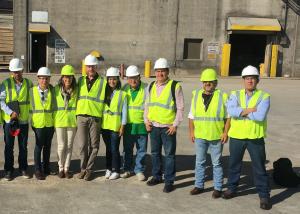Ecuador’s imports of U.S. distiller’s grains with solubles (DDGS) increased 296 percent year-over-year to 22,200 metric tons in 2016/2017, the direct result of the U.S. Grains Council’s work (USGC) to introduce the feed grains co-product to the nation’s livestock sector.
The Ecuadorian government has a corn self-sufficiency policy, though in the past few years, the local corn crop has not been enough to cover domestic demand, resulting in expensive prices for local corn and the government issuing limited import permits.
However, U.S. DDGS is still allowed to be imported into Ecuador and is still a relatively undervalued feed ingredient in this market. To seize this potential demand, the Council conducted a series of activities to introduce DDGS to the industry.
In May 2017, the Council organized a conference to provide technical information to poultry producers and members of a large buyers group in Ecuador. The group did not have experience using DDGS but bought a first shipment for July delivery. The same group confirmed a second shipment for November delivery and intends to become regular users.
“The Council is utilizing its strong market development experience to support increased use of U.S. DDGS in Ecuador,” said Ana Maria Ballesteros, USGC marketing specialist in Latin America. “Following the success of this intensive effort to introduce U.S. DDGS, we expect more and more end-users to purchase this important ingredient.”
The Council’s efforts continued in November, organizing a team of Ecuadorian livestock producers and ingredient distributors to travel to Minnesota and New Orleans to gain information on the production process of DDGS, export logistics and nutritional information on using DDGS in poultry and swine diets.
The team represented small to mid-size poultry, swine and dairy producers with current access to DDGS from five provinces in Ecuador. This program provided the team with valuable information regarding the use of DDGS in poultry and swine diets and helped them understand how DDGS is produced in the United States and how it is managed through the U.S. export system until reaching destination in countries like Ecuador.
“Lots of questions were answered and helped the team gain a better understanding regarding usage of DDGS,” said Ballesteros. “We expect to create even more demand for U.S. DDGS with livestock producers in Ecuador.”
Moving forward, the Council will continue supporting increased use of DDGS in Ecuador by executing additional programs to provide nutritional information to livestock producers in the poultry, dairy and beef sectors.
Learn more about the team’s visit in Minnesota here.


